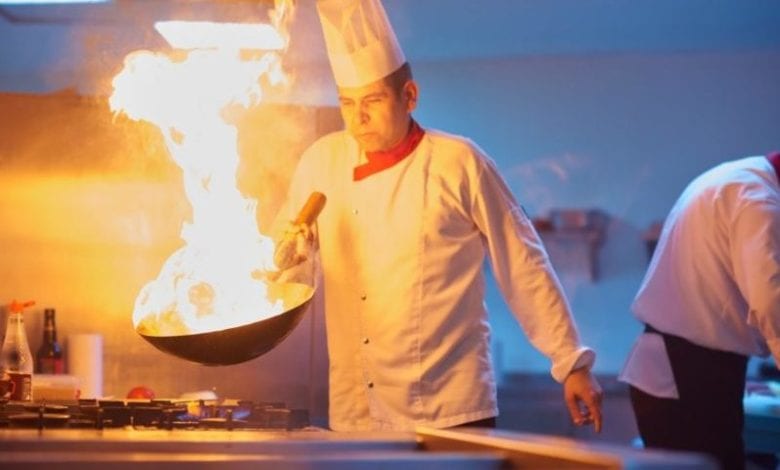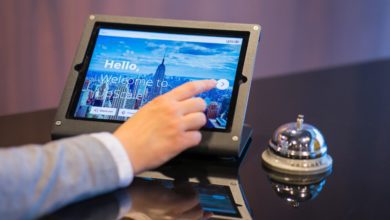Building a state-of-the-art kitchen

Whether you are opening a new hotel or restaurant, or renovating an existing one, there are many things that need to be considered. But the most important aspect to get right, for many, will be the kitchen.
It doesn’t matter what type of customer you want to cater to – a sports bar, country club or fine dining experience – a good reputation and healthy revenue, are built on good food.
Naturally, you will want to stock your kitchen with the best chefs available, but it’s no good if you don’t have the right equipment to complement their talent. The kitchen will be an engine room of your business, so purchasing the right commercial equipment is a must. Here, you will find everything you need to build a state-of-the-art kitchen.
PLANNING IS KEY
When you’re building a new kitchen for your hotel or restaurant, the first thing to do: plan. You’ll need to scrutinise your budget, your menu, the proposed space for your kitchen and decide upon what equipment you consider to be essential.
The most important thing is to consider the maximum number of covers you feel your kitchen needs to be capable of serving. Every business is different, and style of service and customer expectations vary. A hotel kitchen built to cover an event of 2,000 people is going to be significantly different from that of a smaller restaurant – both in size and capability. Understanding your demand and the quality of food you want to serve is the starting point.
KNOW YOUR MENU
The design of almost all commercial kitchens, and the equipment they contain, are determined by the menu. The equipment you will need will be the stuff that can cope comfortably with what you intend to serve. Before you go ahead and purchase and install thousands of pounds worth of high-end cooking apparatus, decide upon your menu.
INVEST IN THE BEST
If you’re going to install a state-of-the-art kitchen, then it stands to reason that you must purchase high-end, top-quality commercial catering equipment. The very best equipment means better food, and that means more customers and a healthier bottom line. There’s no point trying to make do with budget line options. Always, always opt for quality. This will ensure that your food, and your kitchen, achieves the reputation you are hoping to build.
INDUCTION COOKING
Induction cooktops have been a revelation in commercial kitchens. These sleek, energy efficient and ultra-modern cooktops offer unparalleled versatility. Induction technology works by directly heating the coils in pots and pans, whilst ensuring the rest of the surface remains cool to the touch. The use of electromagnets creates heat within the pans themselves, rather than heating them from the outside. This allows food to be cooked quicker, chefs to work closer than ever before with what they’re cooking, while it is cooking, and is extremely energy efficient – not to mention safe. These cooktops are fast becoming the gold-standard in kitchens offering a gourmet dining experience
SOUS-VIDE STORAGE
Sous-vide is a long-practised method by which food and ingredients are sealed in airtight plastic bags. This ensures that the contents stay fresh – preserving the flavours, aromas and nutrients. Apart from safer, more hygienic storage, they also allow for advanced food preparation and portion control, whilst reducing food wastage and lowering costs.
Dishes can be pre-prepared. Fresh meats and fish, poultry, vegetables, fruits and salads can be stored for several days without compromising quality. Chefs are also able to pre-portion soups and sauces. This helps keep running costs low and increase efficiency in the kitchen.
Sous-vide-machines are fast becoming essential equipment. Chefs and caterers will attest that they have become a popular choice in many kitchens, and that it is considered to be one of the most efficient modern culinary innovations.The latest, professional-grade sous-vide machines also offer inbuilt vacuum sealers and temperature-controlled storage.
IMMERSION CIRCULATORS
There has been an explosion of immersion circulators in modern-day, state-of-the-art kitchens. The machine, which acts as a water-oven, creates and controls an exact temperature and is designed to maintain food to within a tenth of a degree. Chefs can therefore place a perfectly grilled, medium-rare T-bone steak in the machine while they prepare the rest of the meal. The latest sous-vide models come with an inbuilt immersion circulator.
3D FOOD PRINTERS
While they may not yet be considered essential, 3D food printers have garnered a lot of praise and, amongst the fanfare, seem to be justifying the hype. Major supermarkets in the US and the UK are already testing the technology – printing 3D cakes and desserts among other things. Restaurants are getting in on the act, and while the process isn’t without its challenges, the machines are allowing chefs to come up with new and exciting ways to make and prepare dishes. They also allow for signature dishes – those that are hand-prepared by the world’s best chefs in the world’s best hotels and restaurants – to be offered outside of the flagship location.
TABLE TRACKING
The tablet may seem like relatively old tech, but hotels and restaurants are now finding that they can help increase service efficiency. New table-tracking software is synchronising the waiters with the kitchen and bar staff, and the customer. The software, which uses a radio-frequency identification system fitted under each table, enables chefs to know exactly how long a table has been waiting for its mains, and waiters to know exactly where they’re seated. The aim is to provide a quicker and more efficient dining experience.
ABOUT THE AUTHOR
Muhammed is the managing director and founder of Cooksmill, a Manchester-based kitchen and catering equipment supplier, with many years of experience
This article first appeared in the July 2016 issue of Hotel Owner







